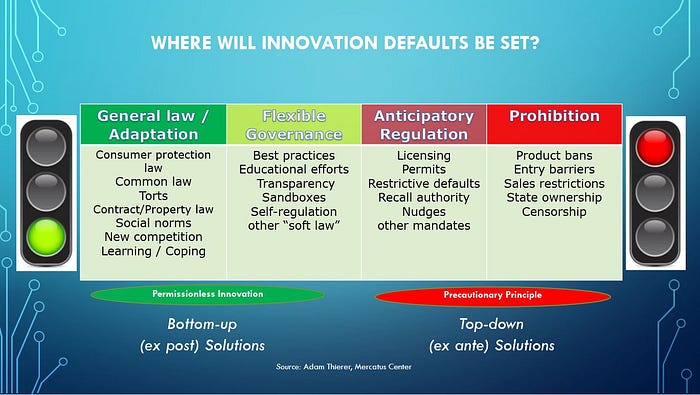[Cross-posted from Medium.]
In an age of hyper-partisanship, one issue unites the warring tribes of American politics like no other: hatred of “Big Tech.” You know, those evil bastards who gave us instantaneous access to a universe of information at little to no cost. Those treacherous villains! People are quick to forget the benefits of moving from a world of Information Poverty to one of Information Abundance, preferring to take for granted all they’ve been given and then find new things to complain about.
But what mostly unites people against large technology platforms is the feeling that they are just too big or too influential relative to other institutions, including government. I get some of that concern, even if I strongly disagree with many of their proposed solutions, such as the highly dangerous sledgehammer of antitrust breakups or sweeping speech controls. Breaking up large tech companies would not only compromise the many benefits they provide us with, but it would undermine America’s global standing as a leader in information and computational technology. We don’t want that. And speech codes or meddlesome algorithmic regulations are on a collision course with the First Amendment and will just result in endless litigation in the courts.
There’s a better path forward. As President Ronald Reagan rightly said in 1987 when vetoing a bill to reestablish the Fairness Doctrine, “History has shown that the dangers of an overly timid or biased press cannot be averted through bureaucratic regulation, but only through the freedom and competition that the First Amendment sought to guarantee.” In other words, as I wrote in a previous essay about “The Classical Liberal Approach to Digital Media Free Speech Issues,” more innovation and competition are always superior to more regulation when it comes to encouraging speech and speech opportunities.


 The Technology Liberation Front is the tech policy blog dedicated to keeping politicians' hands off the 'net and everything else related to technology.
The Technology Liberation Front is the tech policy blog dedicated to keeping politicians' hands off the 'net and everything else related to technology.
Running List of My Research on AI, ML & Robotics Policy
by Adam Thierer on July 29, 2022 · 0 comments
[last updated 4/24/2024]
This a running list of all the essays and reports I’ve already rolled out on the governance of artificial intelligence (AI), machine learning (ML), and robotics. Why have I decided to spend so much time on this issue? Because this will become the most important technological revolution of our lifetimes. Every segment of the economy will be touched in some fashion by AI, ML, robotics, and the power of computational science. It should be equally clear that public policy will be radically transformed along the way.
Eventually, all policy will involve AI policy and computational considerations. As AI “eats the world,” it eats the world of public policy along with it. The stakes here are profound for individuals, economies, and nations. As a result, AI policy will be the most important technology policy fight of the next decade, and perhaps next quarter century. Those who are passionate about the freedom to innovate need to prepare to meet the challenge as proposals to regulate AI proliferate.
There are many socio-technical concerns surrounding algorithmic systems that deserve serious consideration and appropriate governance steps to ensure that these systems are beneficial to society. However, there is an equally compelling public interest in ensuring that AI innovations are developed and made widely available to help improve human well-being across many dimensions. And that’s the case that I’ll be dedicating my life to making in coming years.
Here’s the list of what I’ve done so far. I will continue to update this as new material is released: Continue reading →